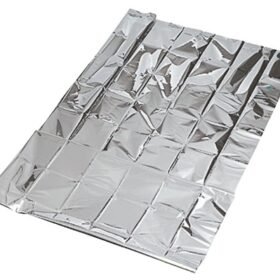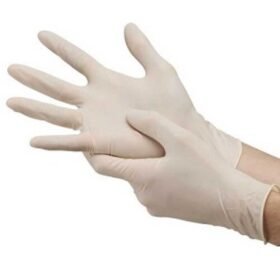20.00 AED
22.00 AED
Personal Protective Equipment (PPE) Introduction This is our complete guide to Personal Protective Equipment (PPE). Safety and Protection have been a top priority in our fast-paced society, particularly in various fields of work and daily life. Personal Protective Equipment (PPE) is vital in protecting people from dangers and safeguarding their safety. 1. What is Personal Protective Equipment (PPE)? Personal Protective Equipment, commonly known as PPE, refers to an array of devices and clothing designed to safeguard people from various workplace or environmental dangers. These dangers could be biological, chemical or ergonomic issues. PPE is an obstacle between the wearer and possible threats, thus reducing the risk of getting injured or suffering from illness. 2. Different types of personal protective equipment: PPE encompasses various clothes and equipment specifically designed to meet safety needs. The most popular kinds of PPE are: a. Protecting the Head: Helmets and hard caps protect the body from electrical dangers, falling objects and other possible impacts. b. Protecting the eyes and face: Safety goggles, face shields and safety glasses shield the faces and eyes from dust, harmful chemicals, and light exposure. c. hearing protection: Earplugs and earmuffs protect your hearing from loud sounds and can prevent hearing loss. d. Respiratory Protection: Respiratory masks and breathing devices remove harmful dust, particles or fumes, and airborne pollutants. e. Protecting Hands: Gloves are available in different materials and styles to protect hands from sharp chemical objects, sharp edges, extreme temperatures, and many more. f. Protecting the Body: The coveralls, jackets, and aprons protect from chemical splashes, fire, heat and other physical dangers. g. Protection for the feet: Safety shoes and boots protect against impacts, electric hazards, punctures or slippery surfaces. 3. Importance of PPE The importance of wearing PPE is not overstated. It acts as a frontline defence, drastically decreasing the chance of injury and occupational illness. The main reasons why PPE is necessary are: a. workplace Safety: PPE ensures the safety and health of workers by reducing injuries and accidents, which, in turn, enhances productivity overall. b. Conformity with Regulations: Several sectors are subject to specific safety regulations requiring employees to wear PPE. It helps avoid fines and penalties while also ensuring a safer environment for workers. c. Protection from Hazards: PPE provides Protection against a vast range of hazards, securing the wearer from hazards such as exposure to chemicals or flying debris and many more. 4. Picking the fitting PPE The selection of the correct PPE for the job or setting is crucial. Here are some essential tips for choosing the best equipment: a. Determine Hazards: Conduct an extensive risk assessment to determine employees' risks. b. Know the different types of PPE: Acquaint you with the different kinds of PPE and their distinct functions to align them with the identified dangers. c. High-Quality and Comfy: Go for high-quality PPE that meets safety standards while ensuring it is easy to wear and comfortable for prolonged wear. d. Proper fit: PPE should fit properly to provide excellent Protection. Unfitting equipment can result in a decrease in efficiency and discomfort. e. Educational and Training: Offer complete instruction on how to use, maintain and properly store PPE. Finalization: Personal Protective Equipment (PPE) is vital in ensuring safety across various industries and everyday routine activities. By understanding the different kinds of PPE, their importance and the best way to choose the best equipment, you can ensure a safe environment for you and your fellow workers. Making sure you invest in the correct PPE does more than protect people but also improves productivity and adherence to safety laws. Keep yourself safe and protected with the proper PPE!



